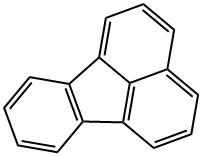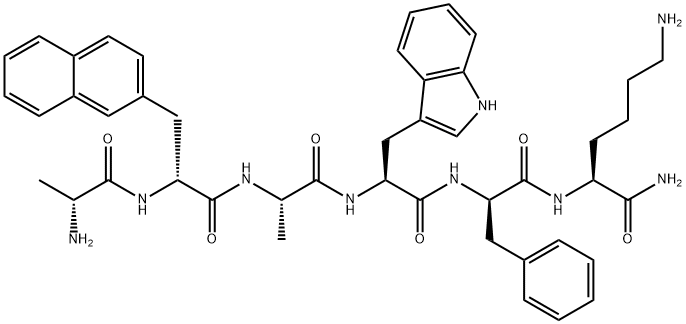A4326812
Fluoranthene , Analysis standard , 206-44-0
Synonym(s):
Benzo[j,k]fluorene
CAS NO.:206-44-0
Empirical Formula: C16H10
Molecular Weight: 202.25
MDL number: MFCD00001184
EINECS: 205-912-4
Update time: 2022-07-08
PRODUCT Properties
| Melting point: | 105-110 °C (lit.) |
| Boiling point: | 384 °C (lit.) |
| Density | 1.252 |
| refractive index | 1.0996 |
| Flash point: | -18 °C |
| storage temp. | APPROX 4°C |
| solubility | Chloroform (Soluble), DMSO (Sparingly), Ethyl Acetate (Sparingly), Methanol (Spa |
| form | Crystalline Powder, Crystals and/or Chunks |
| color | Yellow or yellow-green to gray-beige |
| Water Solubility | insoluble |
| BRN | 1907918 |
| Henry's Law Constant | 5.53, 8.59, 13.0, 19.3, and 26.8(x 10-6 atm?m3/mol) at 4.1, 11.0, 18.0, 25.0, and 31.0 °C, respectively (Bamford et al.,
1998) |
| Stability: | Stable. Incompatible with strong oxidizing agents. |
| CAS DataBase Reference | 206-44-0(CAS DataBase Reference) |
| IARC | 3 (Vol. Sup 7, 92) 2010 |
| NIST Chemistry Reference | Fluoranthene(206-44-0) |
| EPA Substance Registry System | Fluoranthene (206-44-0) |
Description and Uses
Fluoranthene is a polycyclic hydrocarbon anda colorless crystalline solid. Molecular weight=202.26;Boiling point=about 375C; Freezing/Meltingpoint=111C. Hazard Identification (based on NFPA-704M Rating System): Health 0, Flammability 1, Reactivity 0.Virtually insoluble in water.
Fluoranthene can be used as a starting material in the synthesis of:
- Polyfluoranthene (PFA) based conducting polymer (PFA) by electrochemical anodic oxidation using Lewis acid catalyst.
- Substituted fluorenones.
- Fluorescence-emitting oligofluoranthene (OFA) nanorods by oxidative oligomerization.
Safety
| Symbol(GHS) |   GHS07,GHS09 |
| Signal word | Warning |
| Hazard statements | H302-H410 |
| Precautionary statements | P264-P270-P273-P301+P312-P391-P501 |
| Hazard Codes | Xn,N,F,T |
| Risk Statements | 22-36/37/38-40-67-65-50/53-38-11-39/23/24/25-23/24/25-52/53-50 |
| Safety Statements | 37/39-26-36/37-24/25-23-62-61-60-45-16-7 |
| RIDADR | UN 1593 6.1/PG 3 |
| WGK Germany | 2 |
| RTECS | LL4025000 |
| HS Code | 29029090 |
| Hazardous Substances Data | 206-44-0(Hazardous Substances Data) |
| Toxicity | LC50 (24-h) for Daphnia magna 1,300 mg/L (LeBlanc, 1980), Cyprinodon variegatus >560 ppm (H Acute oral LD50 for rats 2,000 mg/kg (quoted, RTECS, 1985). |





